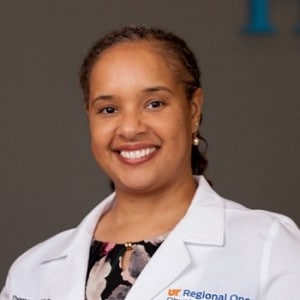By Theresa Woodard, internal medicine practitioner at Harbor of Health
Remember when we were going to pay for our kids’ college by selling their Beanie Babies? Or when we wore acid-washed jeans and used lots of aerosol hairspray? There’s a reason these didn’t have staying power, and the same is true for that hot diet trend you’re tempted to try.
Fad diets sound great because they promise quick weight loss, but statistics show 98 percent of users gain the weight back within five years.
Even worse, many fad diets restrict entire food groups and offer an unbalanced nutritional profile, so they do more harm than good.
Studies show they can limit vitamins and minerals that help prevent chronic conditions; reduce athletic performance by robbing the body of carbohydrates, fluids and electrolytes; and even contribute to conditions like kidney stones, gout and osteoporosis.
Before trying a new diet, ask yourself these questions:
- Does it promise quick weight loss?
- Does it sound too good to be true?
- Does it sell a company’s product?
- Does it lack valid scientific research to support its claims?
- Does it give lists of “good” and “bad” foods?
If you answer “yes” to any of these questions, it’s probably a fad diet. What we need to focus on instead is a true change towards healthy eating for a lifetime.
While you should always talk to a healthcare professional before changing your meal plan, here are some basic tips for patients looking to make a healthy change:
Strive for balance
A diet rich in varied, colorful, whole foods is the best way to stay healthy and keep off weight. Filling up on these foods naturally limits consumption of processed foods that are high in added sugars and saturated fats, and ensures the calories you eat meet your vitamin and mineral needs.
Make sure your diet includes the following:
- Starchy foods like potatoes, bread, rice and pasta
- Plenty of fruit and vegetables
- Some protein-rich foods like meat, fish and lentils
- Some milk and dairy foods
Learn to read Nutrition Labels
Labels follow the average daily intake considered sufficient for the nutrient requirements of a healthy person and are based on a daily diet of 2,000 calories.

Making healthy choices – like more fruits and veggies – is a good way to fill up while still getting the vitamins and minerals you need.
Your doctor can help outline your specific needs – based on your age, gender, health concerns, activity level, etc. – for calories, fat, sugar, sodium and various vitamins and minerals.
Make it a habit to check food labels and buy foods that contain more of the good stuff (vitamins and minerals) and less of the bad (added sugars and saturated fat).
Also, pay attention to the serving size on the label vs. how much you’re actually eating – many times a serving size is less than what we think.
Practice portion control
That takes us to one more suggestion – portion control. Here’s what a healthy serving looks like:
- A cup of fruit (no larger than your fist)
- An ounce of cheese (the size of your thumb from base to tip)
- 3 ounces of meat, fish or poultry (the size of your palm)
- 1 to 2 ounces of nuts (your cupped hand)
To help with portion control, parcel out servings in individual containers ahead of time so you have a visual cue to stop eating. Don’t skip meals or go more than five hours without eating, and start meals with a glass of water, as extreme hunger can cause you to overeat.
